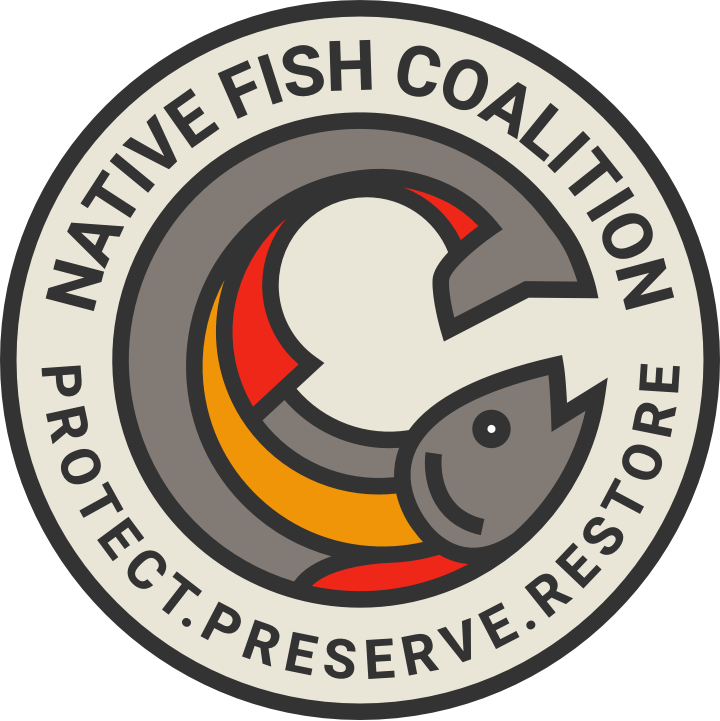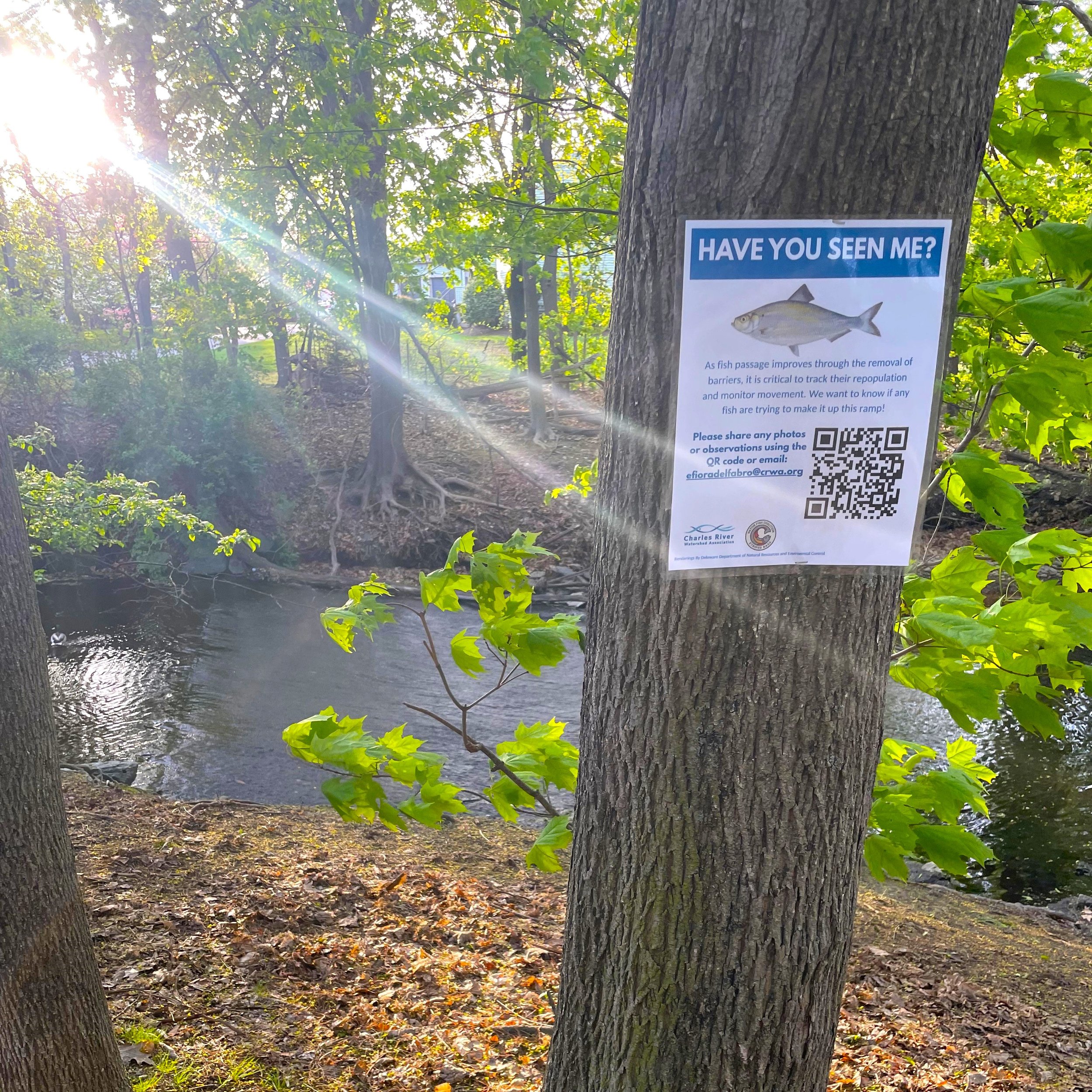Massachusetts NFC helps with temporary river herring signs for the Charles River watershed...
Charles River at Watertown Dam…
Massachusetts NFC has adopted three tributaries to the Charles River: Trout Brook, Cold Spring Brook, and Cheesecake Brook. While the latter two streams empty into the Charles River at points where sea-run river herring are present, it is not known if they access these streams today or whether they did in the past. Dams prevent the herring and other fish from making it upstream to the confluence of Trout Brook.
Cold Spring Brook merges with Hammond Brook where they become Laundry Brook. Laundry Brook empties into the Charles River just downstream of Watertown Dam. Prior to the creation of Bullough’s Pond, an impoundment on upper Laundry Brook, the stream was known as Smelt Brook. Is this because the stream once supported a run of sea-run smelts?
Cheesecake Brook empties into the Charles River roughly 1.5 miles upstream of Watertown Dam. While fish passage is impeded by the dam, a fish ladder allows some percentage of river herring and other fish to gain access to the river upstream. It is said that some river herring access two small streams upstream of Cheesecake Brook: Beaver Brook and Chester Brook.
NFC is looking to confirm whether sea-run river herring and other species of fish from the Charles River are using, or trying to use, Laundry Brook, Cheesecake Brook, or other tributaries. Both Laundry and Cheesecake Brooks flow over pitched cement slabs just before they enter the Charles River. While we know that these structures impede fish passage, whether they complete block fish is not clear. Other streams enter the river via culverts, some of which are perched.
While NFC has been unable to ascertain whether river herring or other fish attempt to enter Cheesecake Brook, we have confirmed that some level of river herring attempt to navigate the cement slab at the lower end of Laundry Brook. The two videos below were taken at Laundry Brook in mid-May by NFC. In all cases, the fish that tried to navigate the slab slipped back into the river after failing to get over it.
In the absence of full-time volunteer monitoring or video surveillance, NFC worked with Charles River Watershed Association to post temporary signs soliciting help from the public in regard to spotting fish. We hope to gain some insight from those who visit or frequent the river and its tributaries.
NFC would like to replace the temporary anadromous fish centric signs with more generic permanent signs. In addition to sea-run fish attempting to use the tributaries, we would like to know if fereshwater species such as white suckers are trying to access the tributary streams. Catadromous American eel are present in the Charles River as well.
























